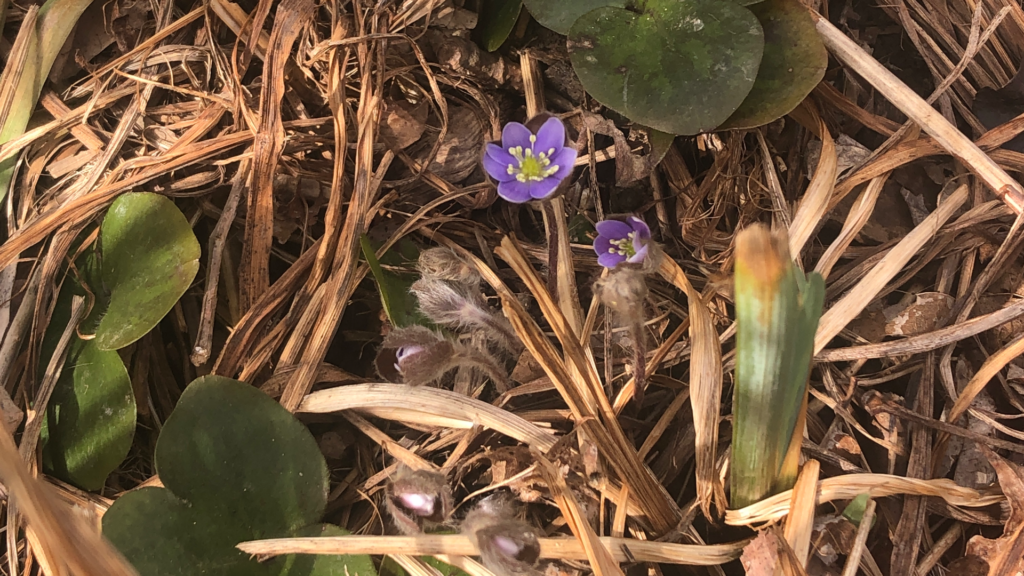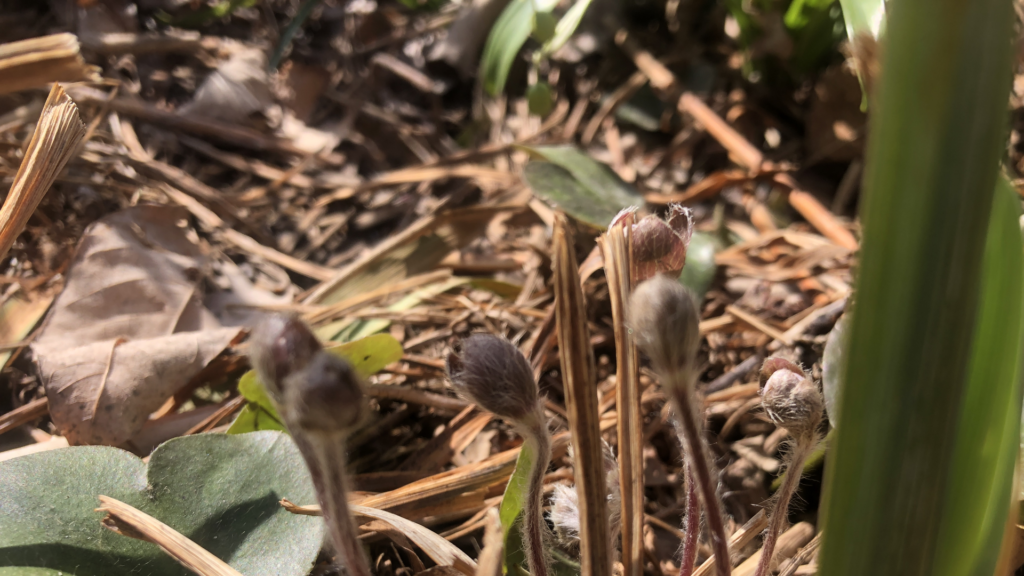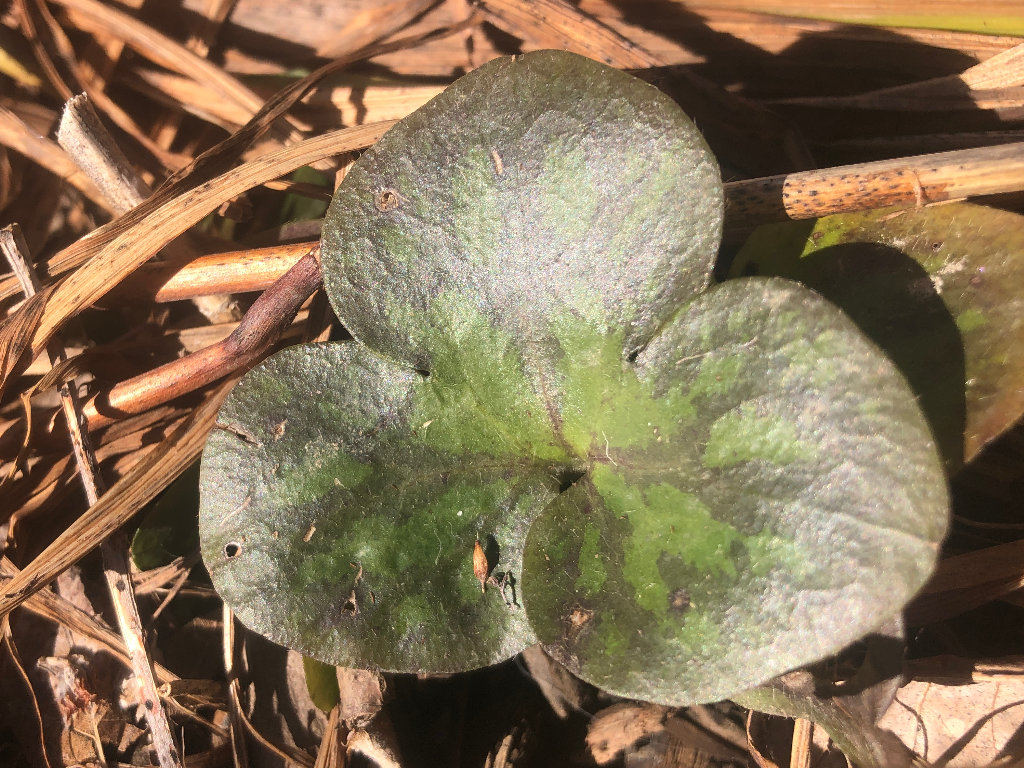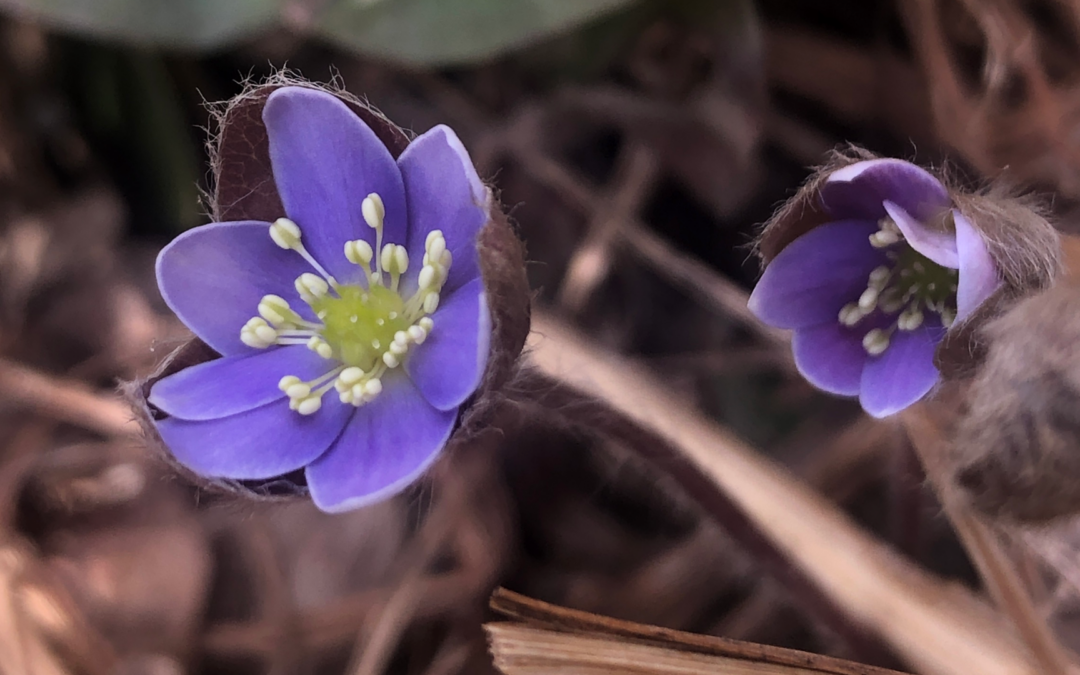Name and Classification
Common name: Hepatica (many others)
Botanical name (genus and species): Hepatica nobilis
Plant family: Ranunculaceae
Plant Description
- Plant size: 3-7 inches in height
- Plant Life cycle: Perennial
- Foliage color: Dark Green, with lobed leaves
- Plant Type: Evergreen
- Bloom color: Lavender, violet, pink, white
- Bloom time: Early Spring
- Seasonal interest: Spring blooms, attractive foliage in fall
- Preferred Sunlight: Part Shade to Full Shade
- Soil Type: Well-draining woodland soil
- Watering Needs: Moderate moisture

In Maryland’s enchanting woodlands, Hepatica (Hepatica nobilis) graces the forest floor with its delicate charm. This perennial beauty boasts intricately lobed leaves and exquisite flowers that are some of the first to emerge in early spring, painting the forest floor in hues of lavender, violet, pink, and white. The dainty flowers are comprised of 6 or 12 delicate petals that form a small saucer.
One colloquial name for hepatica is “Liverwort.” This name is very fitting because Hepatia has very distinctive liver shaped leaves. Botanists have not definitively classified this plant, but many seem to agree that there are two varieties, the round lobed Hepatica and pointed lobed Hepatica. Both varieties have three pronounced lobes on each leaf. Furthermore, the leaves of Hepatica are evergreen, and do not fade or wilt in winter. In fact, the forest green leaves take on a deep purple mottling with cold temperature before producing new leathery purple leaves at the start of the growing season. As the leaves mature they take on a more familiar texture and turn dark green, to repeat the annual cycle.
Embracing a modest stature, Hepatica stands as a testament to the understated elegance of native flora. Plant this perennial in dappled sunlight and well draining, rich soil to encourage its best performance.
Common Problems
Hepatica does not face many pests or diseases. Preventing pest and disease is not necessary and should require little to no effort if Hepatica is planted in the proper conditions.
Care and Maintenance
Caring for Hepatica nobilis involves mimicking its natural woodland habitat. Ensure well-draining soil, maintain moderate moisture levels, and avoid pruning. It is important to leave or provide organic material to enrich the soil around Hepatica, just as there would be in nature.
Garden Uses
Hepatica is a flexible addition to any garden. It can serve as an ideal ground cover providing 4 season interest and its foliage even becomes more complex and interesting in the cold fall and winter months. Plant in woodland gardens for a carpet of color in early spring. Or, bejewel the perimeters of walking paths. Interplanting is another great way to incorporate Hepatica into a garden, similar to Bloodroot. Plant near the base of perennials that are slower to emerge in the spring. Plants like Milkweed, Goldenrod, and Hardy Hibiscus are a few great examples. Interplanting gives gardeners an opportunity to admire the spring blossoms and delightful winter foliage that hepatica has to offer, and provides the essential summer shade that Hepatica needs to survive.

Eco System Services
- Pollinator Habitat
- Wildlife Food Source
- Erosion Prevention
This native marvel is a host for early-spring pollinators. Native bees and honeybees alike are attracted to its glowing flowers. Just like Bloodroot, Hepatica reproduces by way of myrmecochory. Its seeds have a fatty appendage that is enticing to ants. They carry the seeds away where they can then germinate and produce a new Hepatica plant. When grown as ground cover, its presence aids in preventing soil erosion and promoting soil regeneration.
Planting Suggestions
Create a woodland oasis by pairing Hepatica nobilis with companion plants like Trillium, Bloodroot, May Apples, and Virginia Bluebells. This combination not only enhances the visual appeal but also fosters a thriving native woodland ecosystem. Or, Interplant with perennials that die back fully to the ground and emerge in May, like Hardy Hibiscus or Milkweed.
Cultrural Significance
Hepatica has an unusually rich history in medicinal use and old lore. Hepatica nobilis has been used for various ailments ranging from abdominal aches, female reproductive health, breathing problems, bruises, liver problems, and more. It even made an appearance in Linnaeus’ Materia Medica. While this information is fun and educational, do NOT use or consume plants for herbal medicine before consulting a professional.
Hepatica has been used by various Native American tribes for diverse reasons. The Iraquois believed that Hepatica could help with fortune-telling. The Chipewa used it as a charm for trapping fur bearing animals.The Potawatomi would use hepatica to make dyes and Cherokees believed that it could be prepared to ward off bad dreams.

Sources/References
- Maryland Native Plant Society.
- University of Maryland Extension.
- Lady Bird Johnson Wildflower Center.

